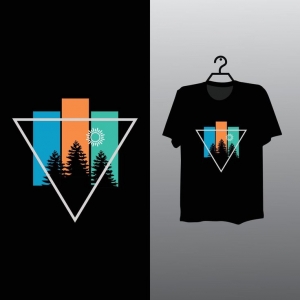For years, artificial intelligence was known for one thing: automation. It made processes faster, cleaner, and more predictable. But it rarely surprised us. It never created anything unexpected.
Generative AI changed that.
Instead of simply following instructions, today’s AI systems can write, sketch, design, compose, and even brainstorm. They don’t just automate tasks — they generate possibilities. And behind this shift is a growing discipline that businesses are racing to adopt: Generative AI Development.Beyond Automation: Teaching Machines to Invent
The real beauty of generative AI isn’t that it can create images or write content. It’s that businesses can now build AI systems that think in directions humans haven’t explored yet. When a company invests in generative AI development, they’re not just building a model — they’re building a collaborator:
- A team member that never runs out of ideas
- A designer who experiments without limits
- A researcher who tests millions of variations in minutes
- A strategist who simulates outcomes before decisions are made
Generative AI is offering something automation never could: imagination at scale.
Innovation Moves From Occasional to Continuous
- Traditional innovation has a rhythm.
- Companies brainstorm, prototype, fail, revise, and try again.
- The process is powerful, but slow.
- Generative AI changes the pace completely.
A model trained
- on customer data can instantly propose new product ideas.
- on past campaigns can generate fresh marketing angles in seconds.
- on operational patterns can simulate alternative strategies and reveal hidden improvements.
- Innovation stops being an annual planning activity — it becomes an everyday capability.
That shift is the real value of generative AI development.
The Rise of the “AI-Ready Organization”
As more industries embrace generative AI, a new kind of business culture is emerging — one where experimentation is no longer optional.
Companies that adopt generative AI development early tend to develop three traits:
- Curiosity as a default approach
Instead of asking, “Can we do this?” teams start asking, “What if we did this another way?”
- Decision-making rooted in creative evidence
Executives don’t have to rely on guesswork when AI can simulate multiple outcomes based on real patterns.
- Rapid adaptation
When markets shift, these companies shift faster — because they’ve built AI tools that can quickly redesign strategies or content.
In simple terms:
Businesses with generative systems are more agile, more experimental, and more resilient.
Building Generative Systems the Right Way
Not all generative AI solutions are created equal.
That’s why Generative AI Development Services matter so much.
A well-developed system is:
- Accurate, because it’s trained on quality data
- Aligned, because it respects brand voice and business goals
- Scalable, because it grows with the organization
- Responsible, because it avoids misuse or bias
- Integrated, because it works with existing workflows
It’s about creating AI that actually strengthens the business.
The Human Role: Creativity with Direction
Generative AI isn’t replacing imagination — it’s extending it.
- A marketer with a blank screen can start with dozens of AI-generated concepts.
- designer can explore styles they never thought to try.
- A developer can prototype features in half the time.
- business analyst can test strategies before choosing a path.
Humans still guide the vision. AI simply gives them more starting points — and fewer creative dead ends. The result is a new kind of teamwork: humans providing direction, AI providing exploration.
Conclusion
Generative AI is no longer a futuristic idea — it’s becoming a foundational business capability.
But the organizations that will lead the next decade aren’t just using generative AI tools.
They’re developing their own, tailored to their needs, their customers, and their ambitions.
Because the future of innovation isn’t just about the ideas we produce.
It’s about the systems we build to help us imagine more.






